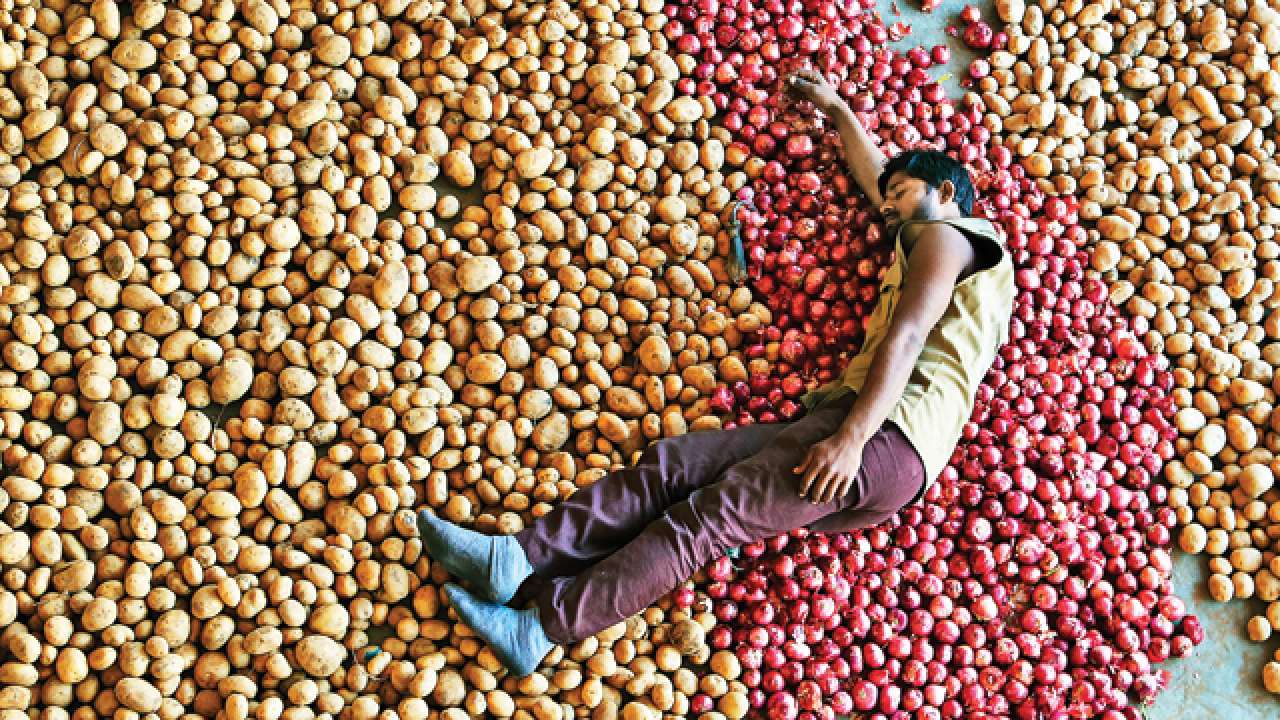
In 2015-16, India imported Rs 1,402,680,000,000 or 1.40 lakh crore worth of agricultural commodities. This was more than three times the annual budgetary allocation for domestic agriculture.
Well, if you think the increasing reliance on food imports in one year — 2015-16 — is merely an aberration, hold your breath. According to commodity traders, the agricultural import bill has jumped six times in the past 13 years, from $4.7 billion in 2004 to reach a peak of $25.7 billion in 2017. Such massive imports come at a time when India is reeling under a terrible agrarian crisis. Ideally, instead of allowing huge foreign exchange outgo on imports, this staggering amount of money should have gone to Indian farmers.
There is something going terribly wrong. From an exalted position of food self-sufficiency built so assiduously over the years, India is frittering away the gains of Green Revolution so easily and fast turning into a net food importer. It hasn’t drawn any lessons from the way it deliberately destroyed the Yellow Revolution — self-sufficiency in edible oils — by simply reducing the import duties in a phased manner over the years to almost zero. From a near self-sufficiency in edible oils achieved in 1993-94, when only 3 per cent of imports were required to meet the domestic requirement, India now imports roughly 60 per cent of its needs valued at over Rs 76,000 crore.
And still, policymakers appear more than keen to allow imports at the drop of a hat. Using the argument that imports are necessary to contain rising food prices, policymakers are opening up to cheap and subsidised agricultural imports and that also at zero per cent duty. No wonder, despite a bountiful harvest, the imports continue to pour in. The more the imports, the more severe a blow it strikes to the livelihood security of small farmers. With no takers for their produce, small farmers are the first to abandon farming and migrate to urban centres in search for menial jobs. With job creation already at its lowest, uprooting small farmers to force them into the cities does not make any economic sense.
I have always maintained that importing food is like importing unemployment. Allowing cheaper imports is the easiest way to force farmers to quit agriculture. But perhaps, what is not being perceived is that turning agriculture uneconomical is part of a policy design. Considering that the National Skill Development Council proposes to bring down the percentage of population engaged in farming from the existing 52 per cent to 38 per cent by the year 2022, I will not be surprised if the increasing emphasis on opening up for agricultural imports is deliberate. Former RBI Governor Raghuram Rajan had, a number of times, remarked that the biggest reforms would be when farmers are pushed out of agriculture to move into the cities.
How can a surge in imports be justified at the time of a bumper harvest. With a record 97 million tonnes of wheat production, allowing nearly 8 lakh tonnes of wheat imports at zero duty from Ukraine and Russia makes little economic sense. In addition, nearly 4,000 tonnes of onions have already been imported from Egypt, and as per industry estimates, another 6,000 tonnes of onions are expected to touch the shores in a fortnight or so. Only a month ago, farmers were throwing onions onto the streets. Meanwhile, the government has allowed import of 3 lakh tonnes of sugar at a reduced duty of 25 per cent to augment supplies during the festive season.
Earlier, as per a CRISIL report, India imported 6.6 million tonnes of pulses at zero import duty in 2016-17, and that also at a time of a record bumper harvest. This resulted in a crash in prices forcing farmers to go in for distress sales. In many places, farmers were not able to realise more than Rs 3,250 to Rs 4,000 per quintal for arhar, against the procurement price of Rs 5,050 per quintal. In case of moong, the market prices have remained low throughout. Against an MSP of Rs 5,225 per quintal, moong prices have remained below Rs 3,800. Except for chana (black gram), the profit margin for farmers fell by 30 per cent for all pulses. The disturbing trend in depressed prices still continues. The new arrivals of urad and moong are also not finding buyers, with wholesale prices not picking up beyond the past year’s low levels.
India has already signed a MoU with Mozambique for importing 3.75 lakh tonnes of pulses in the three-year period, 2016 and 2019. It is also negotiating with Brazil, Russia, and South Africa to import pulses and oilseeds. With the US Department of Agriculture (USDA) suggesting India increase soybean imports, which have come down significantly after import duties on edible oils were raised a few months back, it is quite obvious that outsourcing agriculture is becoming a norm rather than an exception. This has dangerous portents for food self-sufficiency as well as for millions of farmers’ livelihoods.
The author is an agricultural policy analyst. Views expressed are personal.